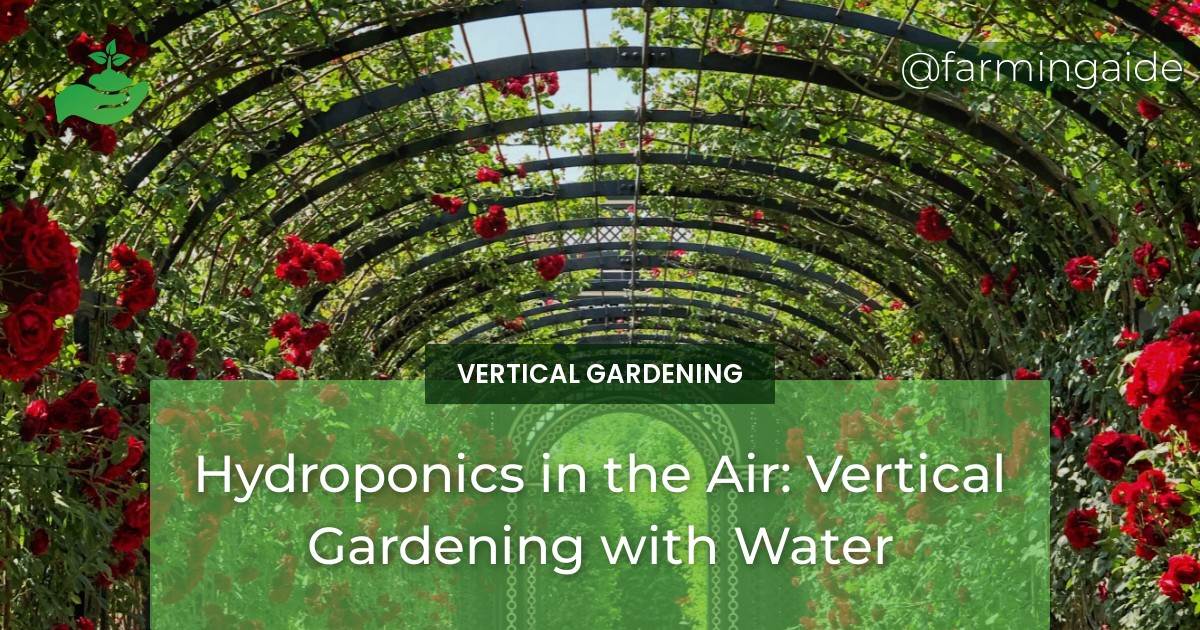Hydroponics, the science of growing plants without soil, has revolutionized the way we grow plants. Vertical gardening, on the other hand, is a gardening technique that utilizes vertical space to produce crops. When these two methods are combined, we get hydroponic vertical gardening, a system that allows us to grow plants in an efficient and space-saving way. In this article, we will explore the benefits of hydroponics for vertical gardens, the different types of hydroponic systems for vertical gardening, nutrient management in hydroponic vertical gardens, and hydroponic vertical garden maintenance.
Benefits of hydroponics for vertical gardens
Hydroponic vertical gardening has numerous benefits, some of which are:
Increased Plant Yield
Hydroponic vertical gardening allows us to produce more crops per square foot of land than traditional soil-based gardening. This is because hydroponics provides plants with all the nutrients they need, resulting in faster growth and larger yields.
Efficient Use of Space
Vertical gardening allows us to use space efficiently by growing crops vertically, thus saving horizontal space. Hydroponic vertical gardening takes this a step further by allowing us to grow more plants in the same space than traditional soil-based gardening.
Water Conservation
Hydroponic vertical gardening uses up to 90% less water than traditional soil-based gardening. This is because hydroponics recirculates water, which means that the same water can be used again and again to grow plants.
Better Nutrient Absorption
Hydroponic vertical gardening allows plants to absorb nutrients more efficiently than traditional soil-based gardening. This is because hydroponics provides plants with all the nutrients they need in the right proportions and at the right time.
Introduction to hydroponic vertical gardening
What is Hydroponic Vertical Gardening?
Hydroponic vertical gardening is a type of water-based gardening that utilizes vertical space to grow plants. Plants are grown in a soil-free medium, and their roots are exposed to a nutrient-rich water solution.
Types of Hydroponic Vertical Gardening
There are different types of hydroponic vertical gardening systems, including:
- Nutrient Film Technique (NFT)
- Wick System
- Aeroponics
- Drip System
Advantages of Hydroponic Vertical Gardening
Hydroponic vertical gardening has several advantages, including:
- It allows us to grow crops in a limited space
- It uses less water than traditional soil-based gardening
- It results in faster plant growth and larger yields
- It reduces the risk of pests and diseases
- It allows us to grow crops all year round
ALSO READ
Different hydroponic systems for vertical gardening
Nutrient Film Technique (NFT)
The Nutrient Film Technique (NFT) is a hydroponic system that involves a thin film of nutrient-rich water flowing over the roots of the plants. This system is ideal for growing plants with shallow roots, such as lettuce and herbs.
Wick System
The wick system is a passive hydroponic system that uses a wick to draw the nutrient solution from the reservoir to the plants’ roots. This system is ideal for growing plants with small to medium-sized roots, such as tomatoes and cucumbers.
Aeroponics
Aeroponics is a hydroponic system that involves suspending the plants’ roots in the air and misting them with a nutrient-rich water solution. This system is ideal for growing plants with large roots, such as strawberries and peppers.
Drip System
The drip system is a hydroponic system that involves dripping the nutrient solution onto the plants’ roots using a drip emitter. This system is ideal for growing a wide variety of plants, including vegetables, fruits, and flowers.
Nutrient management in hydroponic vertical gardens
Understanding Hydroponic Nutrients
Hydroponic nutrients are essential to the growth and development of plants in a hydroponic system. These nutrients are dissolved in water and delivered to the plants’ roots.
Measuring Nutrient Concentration
Measuring nutrient concentration is an essential aspect of hydroponic vertical gardening. This involves measuring the pH level and electrical conductivity (EC) of the nutrient solution to ensure that plants receive the right amount of nutrients.
Nutrient Solution Formulation
Nutrient solution formulation involves mixing the right proportions of essential nutrients to create a nutrient-rich water solution that plants can absorb.
pH and EC Management
pH and EC management is essential in hydroponic vertical gardening. This involves adjusting the pH level and EC of the nutrient solution to ensure that plants receive the right amount of nutrients.
ALSO READ
How Does Vertical Gardening with Hydroponics Benefit the Environment?
Sustainable vertical garden hydroponics benefit the environment by maximizing space, conserving water, and reducing the need for chemical pesticides. This method also decreases transportation emissions by enabling local food production. Additionally, the use of hydroponics minimizes soil erosion and depletion, promoting a more sustainable agricultural system.
Hydroponic vertical garden maintenance
Maintaining pH Levels
Maintaining the pH level of the nutrient solution is crucial in hydroponic vertical gardening. This involves testing the pH level regularly and adjusting it as necessary using pH adjusters.
Lighting for Vertical Gardens
Proper lighting is essential in hydroponic vertical gardening. Plants need adequate light to grow and develop. This can be achieved using artificial lighting, such as LED grow lights.
Pest and Disease Management
Pests and diseases can be a significant problem in hydroponic vertical gardening. To prevent and control pests and diseases, it is essential to maintain good hygiene, monitor plants regularly, and use organic pest control methods.
Harvesting the Crops
Harvesting the crops is the final stage in hydroponic vertical gardening. This involves harvesting the crops at the right time and using proper techniques to ensure that they remain fresh and nutritious.
RELATED ARTICLES:


